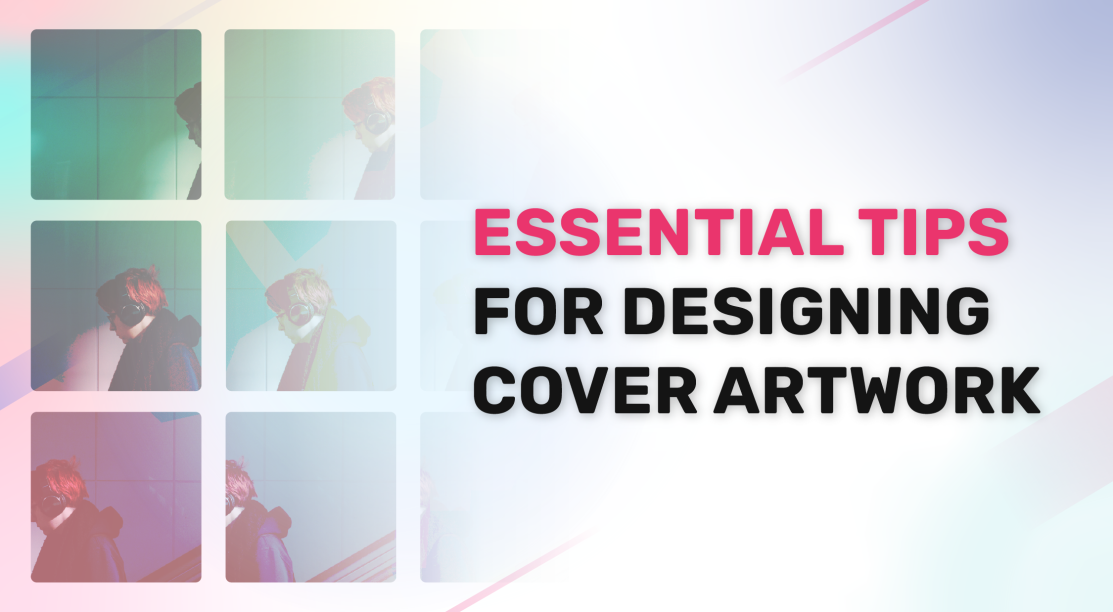Your cover artwork is the first thing listeners see before they dive into your music. It’s a visual snapshot of your sound, and in today’s crowded digital world, it’s essential to create a design that grabs attention. A well-designed cover can speak volumes about your brand, but it’s also important to ensure it follows the guidelines set by digital streaming platforms (DSPs). Here are some essential tips to help you design artwork that stands out, resonates with your audience, and meets DSP requirements.
Image Specifications
Before diving into the creative process, consider these common specifications for your album cover:
- Dimensions: Most platforms require a square image. The recommended size is 3000 x 3000 pixels, with a minimum of 1400 x 1400 pixels.
- Format: Use formats like JPG or PNG to maintain quality across various digital platforms.
- Color Profile: For digital platforms, use the RGB color profile, optimized for screen viewing. If you plan to print your artwork, convert it to CMYK for accurate color reproduction.
Importance of Thumbnail Optimization
Remember that many listeners will first encounter your cover artwork as a thumbnail on streaming platforms. Ensure that the key elements—such as the focal point and any text—remain visible and legible when reduced to a smaller size.
Content Restrictions to Keep in Mind
To ensure your album cover meets DSP standards, be aware of these common restrictions:
- Inaccurate Metadata: Only include the artist names and release titles that correspond with the metadata.
- No Logos or Links: Avoid incorporating website addresses, logos, QR codes, or barcodes.
- Misleading Imagery: Do not depict or reference artists who do not perform on the album.
- Copyright Compliance: Ensure you have the right to use any images or artwork included in your cover, including photos, illustrations, and other visual elements.
- Cultural Sensitivity: Avoid artwork that promotes hatred based on race, religion, gender, sexual orientation, or other identities.
- References to Physical Products or Retailers: Do not mention physical packaging (like CDs or vinyl), digital products, or any retailers.
- Promotional Text: Don’t include promotional phrases such as pricing information or limited-time offers on your cover art.
Design Best Practices
Creating compelling album artwork involves blending creativity with practical design principles. Here are some strategies to elevate your design:
- Know Your Audience: Understand your demographic and research trends within your genre to see what visual styles resonate with your target audience.
- Typography: Select fonts that align with your music’s style and message. The artist’s name and album title should be easy to read, even when viewed as a thumbnail or on smaller screens.
- Color Psychology: Color can evoke specific emotions. Bold, bright colors may suggest energy or excitement, while muted or darker tones can convey a more introspective or serious mood.
- Maintain Consistency: Ensure that your album cover fits within the broader scope of your branding. From your logo to promotional materials, maintaining visual harmony helps strengthen your brand identity and makes it easier for fans to recognize your work.
- Seek Feedback: Before you finalize your design, seek feedback from people you trust, such as fellow musicians, fans, or creative peers. Fresh perspectives can highlight details you might have missed and improve the overall design.
Final Touches
Once you’ve crafted your design, prepare it for distribution by ensuring it meets all specifications for your chosen platforms. Always double-check for typos and errors to present a polished final product.
If you need any further assistance with your cover artwork, feel free to reach out to us at support@label-engine.com.

